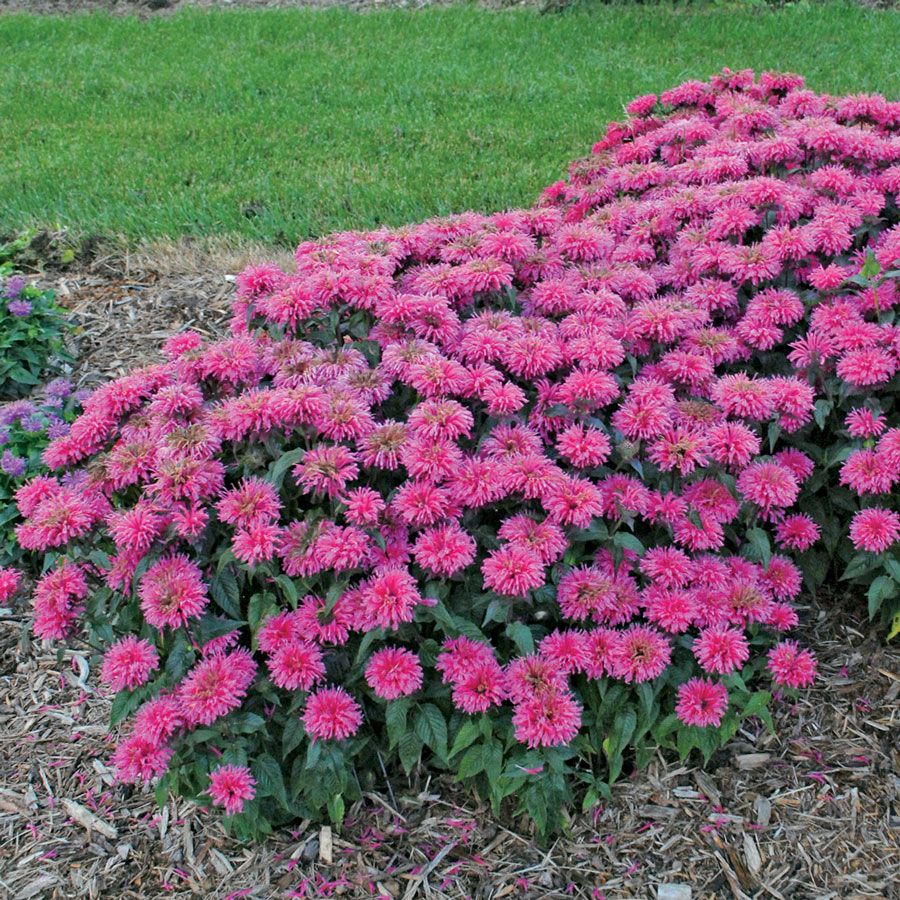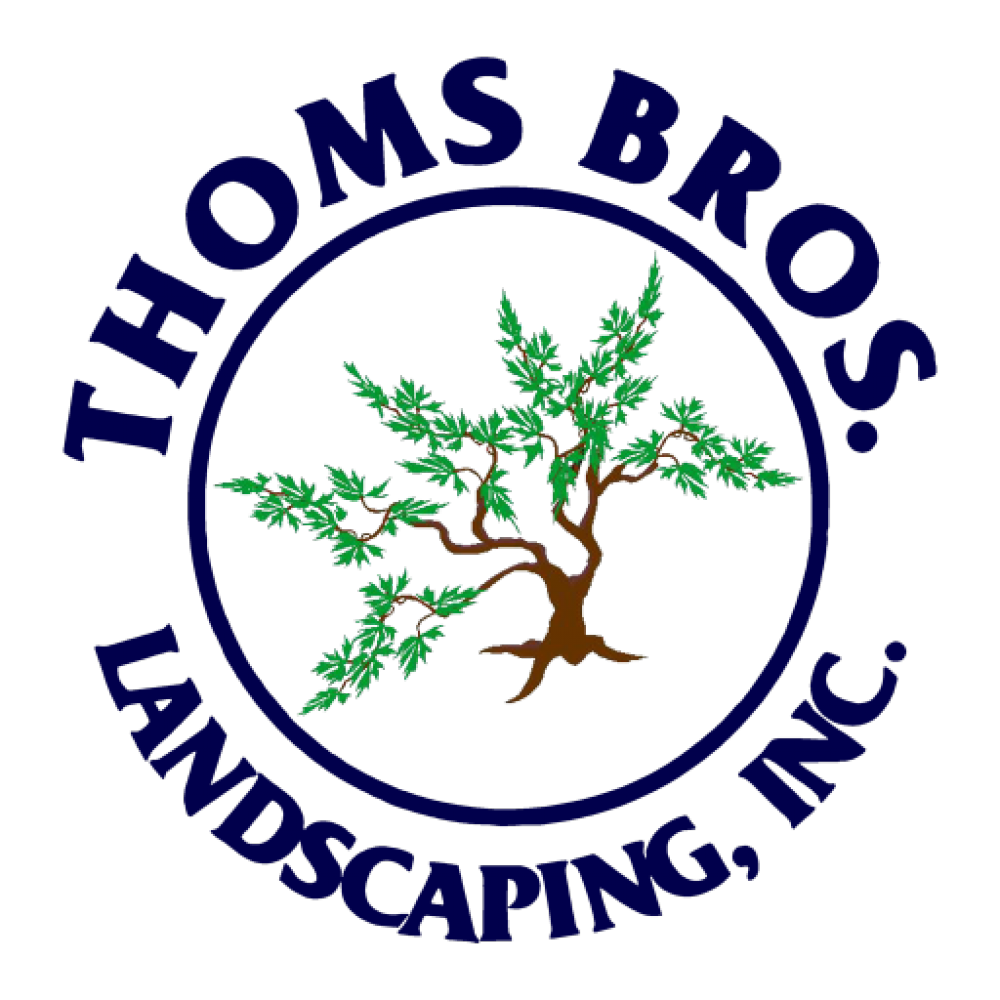We continue to explore new great products for the 2023 season. We have spent the last few months going over new hardscape products, but now as Spring has officially arrived we will explore plant material. Thoms Bros uses many breeders and growers for our plant sources. We are plant geeks. One of our favorite breeder/growers is Hortech out of Spring Lake, Michigan. Founded in 1983, Hortech is an innovative Midwestern wholesale nursery and product developer specializing in outstanding native and non-native perennials, ground covers, vines, ferns, ornamental grasses, and succulents.

At Hortech, they grow plants in an Earth Friendly® manner using natural checks and balances rather than with intensive pesticide applications (which unfortunately is the norm). They believe that subjecting plants to constant chemical cocktails (insecticides, fungicides, miticides, and antibiotics) makes little sense as the plants suffer from suppressed immune defenses, which in turn leads to poor establishment and disease susceptibility (akin to drug withdrawal). On top of this, chemical intensive growing is unhealthy for the people that handle the plants, and it is detrimental to the environment.
Instead of using vast quantities of chemicals, Hortech uses soil inoculants and compost tea (to prevent disease), ladybugs to control aphids, predatory mites to control sap-feeding mites; beneficial nematodes to control beetles, praying mantis to eat leaf eating insects, and many other natural controls to ensure plant health and vigor. By growing “in concert with nature”, using biological and organic methods, their plants look and grow better (and suffer no chemical withdrawal upon leaving the nursery). In addition, their plants are safe to handle and pose little risk to the environment.
The second unique feature of Hortech is their diligent testing protocol of new plants—prior to offering them for sale. Each plant is evaluated (in our trial gardens) for hardiness, disease and insect resistance, beauty, vigor and longevity. They feel that plant testing should be done at the wholesale nursery, not in the end consumer’s landscape. For this reason, they avoid rushing new products to market, and instead focus on long term success.
The third unique feature of Hortech is that they practice customer-centric, lean system management methods. Over the years this has resulted in effective procedures, an educated team, and long-term retention (of team members). And, this means Premium Plants and Steadfast Service.
Hortech has introduced many new plants to their lineup for 2023 including (1) new fern (56) perennials/groundcovers and (7) ornamental grasses. We won’t go through all of these new introductions, but in the next several weeks will visit (6) native cultivar perennials, (6) perennials, and (6) ornamental grass/fern.
‘Starstruck’ Blue Star – Amsonia
A lovely nativar with a compact and symmetrical habit; ‘Starstruck’ emerges early spring with lovely deep green foliage bisected by pale white midribs. Bright clusters of star shaped periwinkle blue flowers follow in late spring, and post-bloom is when you really appreciate the tidy foliage and strong habit- providing carefree shrublike structure to borders, mixed beds, and mass plantings.
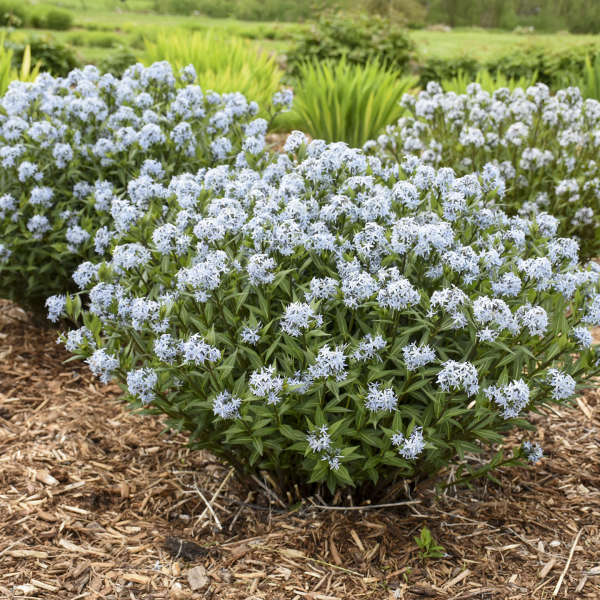
‘Starstruck’ easily grown in average, medium, well-drained soil in full sun to part shade. Prefers moist, loamy soils. Best fall foliage color usually occurs in full sun, but flowers generally last longer if given some afternoon shade in hot sun areas. Taller plants may appreciate some staking or support. If grown in too much shade, stems may open up and flop. No known serious insect or disease problems. Deer tend to avoid this plant.
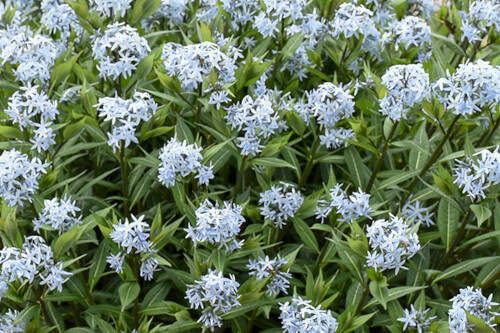
Kismet Raspberry Coneflower – Echinacea
The ever-popular Coneflower is a versatile perennial. Echinacea is a genus of seven species all endemic to eastern and central North America. Coneflowers bloom from June to August with some sporadic later bloom. Attractive to butterflies and other insect pollinators. Good fresh cut or dried flower. The KISMET® series is from an interspecific breeding program offering higher crown count, first year blooming, compact and upright habit, an extended flowering period and better overwintering survivability. A Terra Nova Nurseries, Inc. introduction. USPP#28768: unlicensed propagation prohibited.
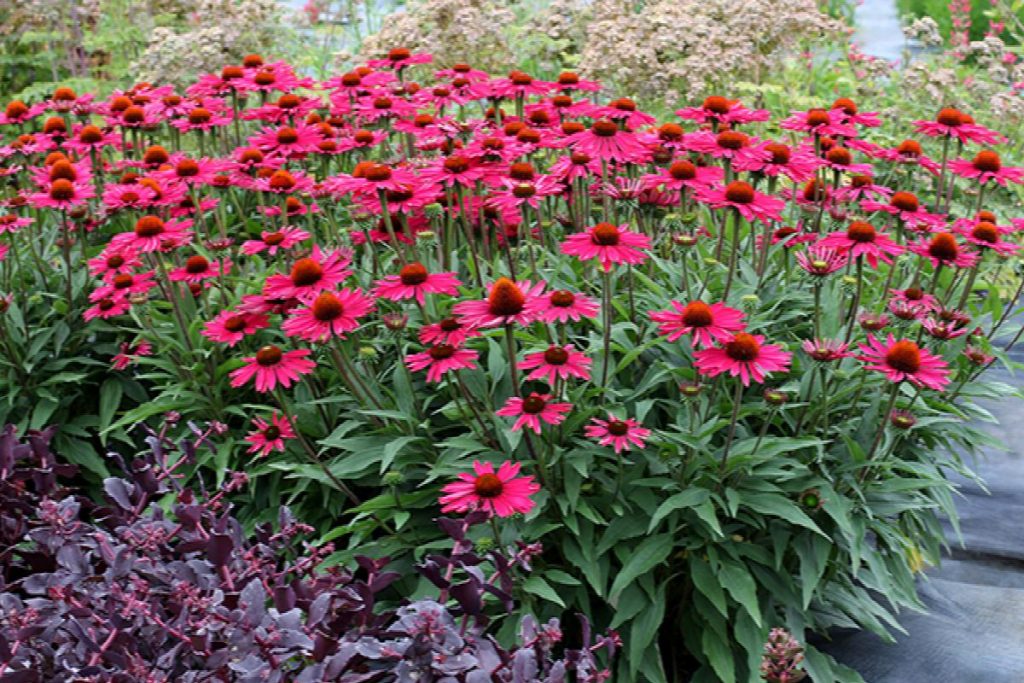
Kismet® Raspberry is sure to dazzle with the sheer amount of brilliant raspberry-pink flowers that arise during summer and fall. The masses of flowers feature lovely golden bracts, surrounded by bright pink petals that are cupped ever so slightly- revealing contrasting white undersides. A compact grower and favorite of pollinators, this coneflower is well suited to the middle of the border, or anywhere else its long summer blooming period can be appreciated.
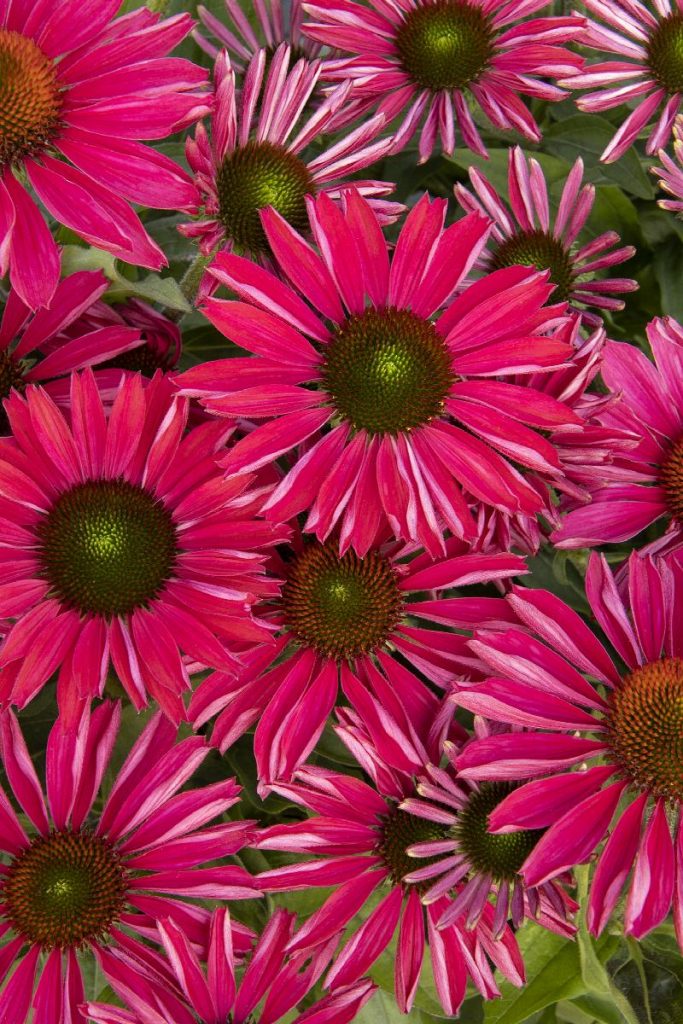
Native Baby’s Breath – Euphorbia corollata
Native to the Midwest, Euphorbia corollata is topped with numerous clusters of tiny white flowers atop thick blue-green stems- flanked by alternating smooth, waxy green foliage. The flowers resemble its namesake Baby’s Breath, and are borne in such numbers as to make the sturdy stems arch over. The nectar of these blossoms attract native insects, while many bird species enjoy their seeds.
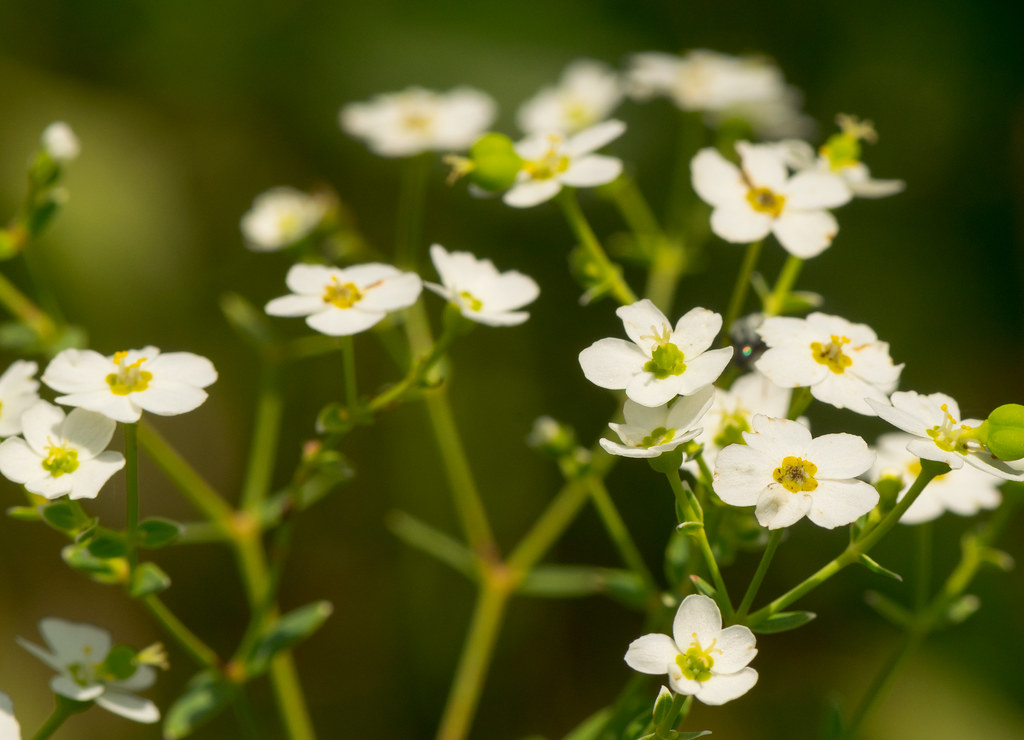
Also known as Flowering Spurge, Poison Milkweed and Wild Spurge, it prefers full sun and dry conditions and tolerates almost any kind of soil, including loam, clay, sand, gravel, or rocky material. It can typically be found as a wildflower in forests or natural areas at the edge of woods, or as a weed in disturbed areas along roadsides, waste places, and old fields. Thriving in poor soil is an advantage for this plant because it reduces competition.
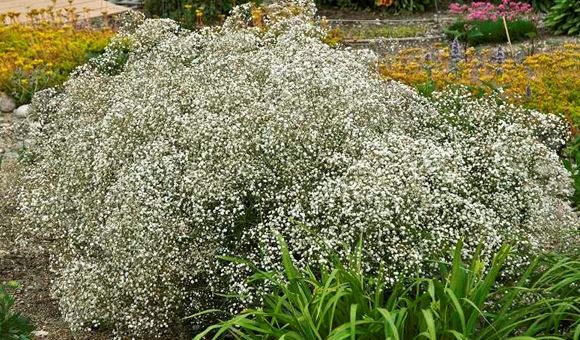
Cherry Berries Wintergreen – Gaultheria procumbens
A superb nativar, Cherry Berries™ is an “enhanced” cultivar of wintergreen, with spring borne, bell-shaped, waxy-white flowers that are carried among glossy green, evergreen foliage. Once pollinated, the flowers develop into large cherry-red, deliciously edible berries, considerably more numerous and larger than those of the common species. More importantly, Cherry Berries™ is faster growing, and more soil-accommodating than the species, which tends to be fussy and quite slow growing. Cherry Berries™ grows well under deciduous trees and shrubs and makes a festive addition to holiday containers.
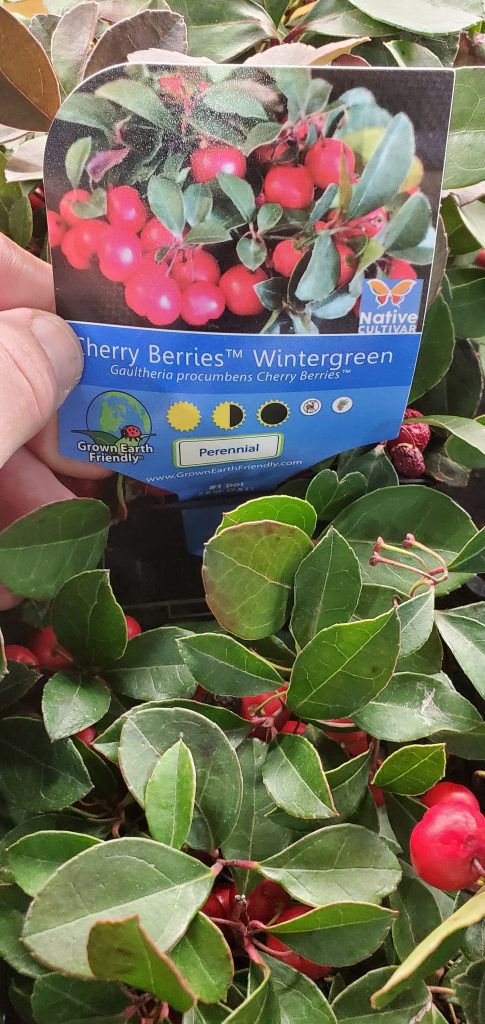
Self-fertile wintergreen ripens berries in waves, starting in late summer until late winter. They are a creeping native of the eastern United States and will spread outward 12 inches or more. Plant 12 inches apart, in partial or full shade. Needs a loose, acidic soil with high organic matter content. It grows to about 6 inches tall and makes a great edible evergreen groundcover. Hardy in USDA Zones 3-9.
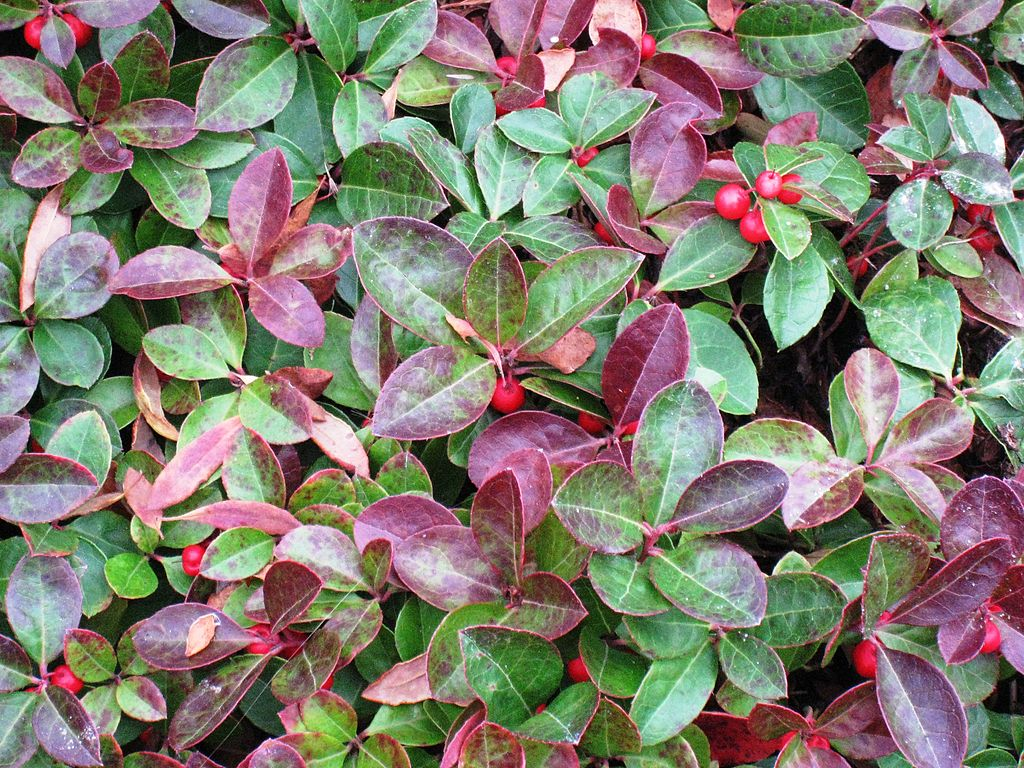
‘Lemon Love’ Coral Bells – Heuchera
Coral Bells are a versatile perennial. H. villosa hybrids are known for their vigorous habit; this variety features slightly ruffled, chartreuse leaves. The nearly fluorescent yellow foliage of ‘Lemon Love’ makes this Heuchera quite useful for contrast and brightening up shady areas. And, the foliage in non-scorching, which is likely due to its H. villosa heritage. The H. villosa parentage also contributes to its robust size, up to 3-feet-across. A low grower, ‘Lemon Love’ forms mounds to 14-inches, and during summer sends up bright chartreuse floral scapes, which bear ivory flowers. The broad stature of ‘Lemon Love’ makes it ideal for borders or colorful ground covering where it is exceptional at lightening up shadowy spots in the landscape.
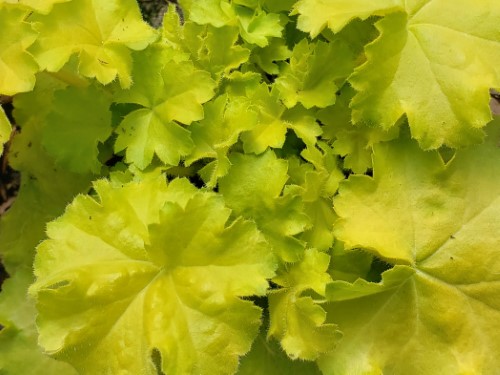
Coral bells are easy to grow and blend easily with most other perennials in the landscape. Because of their low, mounding habit, they are often used as edging along paths or in containers. Try cutting a few of the tall flower scapes for fresh bouquets.
Sugar Buzz ‘Bubblegum Blast’ Bee Balm – Monarda
The members of the SUGAR BUZZ® Series from the Walters Gardens hybridizing program are perfectly suited to the middle of the flower border at 16-24″ tall. All members in this series are similar in size, bloom time, and vigor, making it easy for growers to offer the entire series. In midsummer, they form a solid dome of color with their 2-2½” flowers on strong, well-branched stems. The dark green foliage forms an upright clump with enough vigor to quickly fill out containers nicely but are not aggressive in the garden.
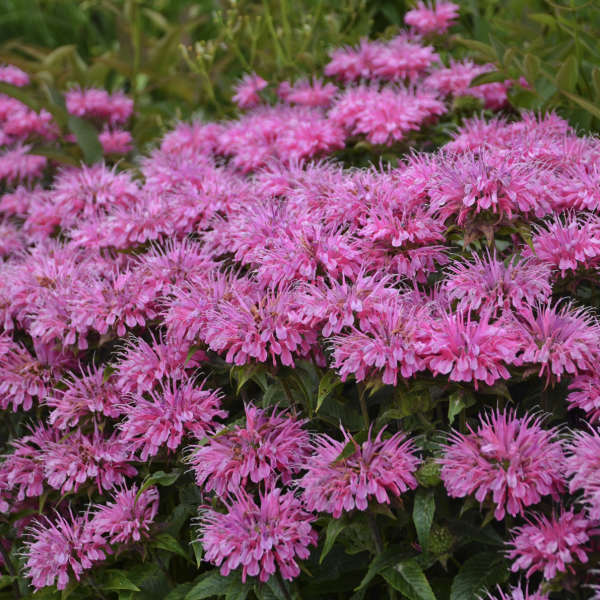
In midsummer, ‘Bubblegum Blast’ forms a solid dome of hot pink, 2-2½” flowers on strong, well-branched stems. The dark green foliage forms an upright clump that will fill out containers nicely but won’t run all over the garden. It displays above average resistance to powdery mildew.
Monarda is native to eastern North America, so it is easy to grow and it multiplies quickly. The flowers’ sweet nectar attracts scores of hummingbirds, butterflies, and bees to the garden. The aromatic foliage smells like mint when crushed and is often used to flavor teas.
